Today’s stroll Kyoto Shimogamo-jinja Shrine to Kyoto Gyoen
Today, let’s take a walk in the Kyoto Gyoen, a place of recreation and relaxation for the citizens of Kyoto, along with the World Heritage Site of Shimogamo Jinja Shrine. Shimogamo Jinja Shrine is surrounded by a dense ancient forest and is said to be the oldest shrine in Kyoto. Nearby is the Kyoto Gyoen Garden, the setting of “The Tale of Genji” written by Murasaki Shikibu. This area is a place where you can feel the breath of ancient times and elegant history at the same time, a place that is truly “Kyoto-like”. Let us begin our walk.
- Today’s Kyoto Stroll: Shimogamo-jinja Shrine to Kyoto Gyoen
- Start strolling in Kyoto Gyoen from Shimogamo Jinja Shrine!
- A. (Start) “Demachiyanagi Station” of Keihan Electric Railway and Eizan Electric Railway
- B.Shimogamo-jinja Shrine (Kamo Goso-jinja Shrine), the Tadasunomori forest growing thick in the city of Kyoto
- C. Demachi Masugata Shopping Street, where “now” and “old” coexist.
- D. Nashinoki Jinja Shrine, famous for its sacred water
- The Kyoto Imperial Gardens (from the Seiwa-in Gate to the Inui Gate), where history is integrated into daily life
- F.Imadegawa Subway Station
- Review of the Kyoto Gyoen walking route from Shimogamo Jinja Shrine
- Link from Shimogamo-jinja Shrine to Kyoto Gyoen Strolling Site
- Recommended articles around Strolling in Kyoto Gyoen from Shimogamo Jinja Shrine
Today’s Kyoto Stroll: Shimogamo-jinja Shrine to Kyoto Gyoen
A. “Demachiyanagi Station” of Keihan Electric Railway and Eizan Electric Railway
B. Shimogamo-jinja Shrine (Kamo Goso-jinja Shrine), the Tadasunomori forest growing thick in the city of Kyoto
C. Demachi Masugata Shopping Street, where “now” and “old” coexist.
D. Nashinoki Jinja Shrine, famous for its sacred water
E. The Kyoto Imperial Gardens (from the Seiwa-in Gate to the Inui Gate), where history is integrated into daily life
F.Imadegawa Subway Station
Start strolling in Kyoto Gyoen from Shimogamo Jinja Shrine!
A. (Start) “Demachiyanagi Station” of Keihan Electric Railway and Eizan Electric Railway
Demachiyanagi Station is the first station of two railroads, Keihan Railway and Eizan Railway. Let’s start this walk from this location.
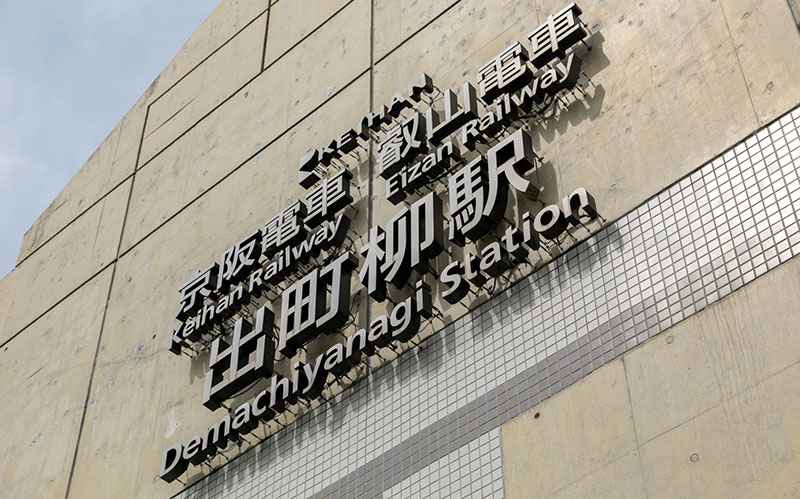
Two rivers, the Takano River and the Kamo River, flow through the northern part of Kyoto City. Demachiyanagi Station is located right where these two rivers merge to form the Kamo River. Incidentally, the “Kamo River Delta,” where the rivers meet, is a place of recreation and relaxation for local residents as well as a tourist attraction, and is famous for its turtle stones (stepping stones shaped like turtles).
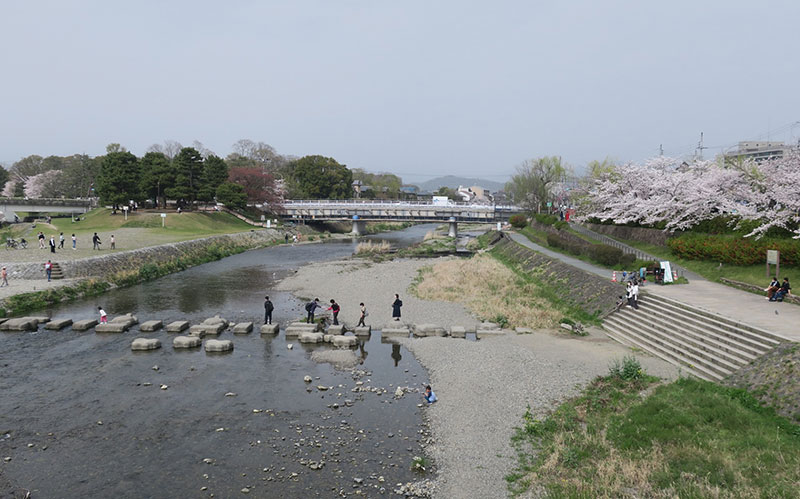
From Demachiyanagi Station, take the riverside path (Kawabata Dori) to Shimogamo Shrine. Cross the bridge and head north, and you will see a bright vermilion torii gate on the left side of the Y-junction
B.Shimogamo-jinja Shrine (Kamo Goso-jinja Shrine), the Tadasunomori forest growing thick in the city of Kyoto
Passing through the torii gate and continuing on, you will reach the approach to Shimogamo Jinja Shrine, surrounded by the Tadasunomori forest.
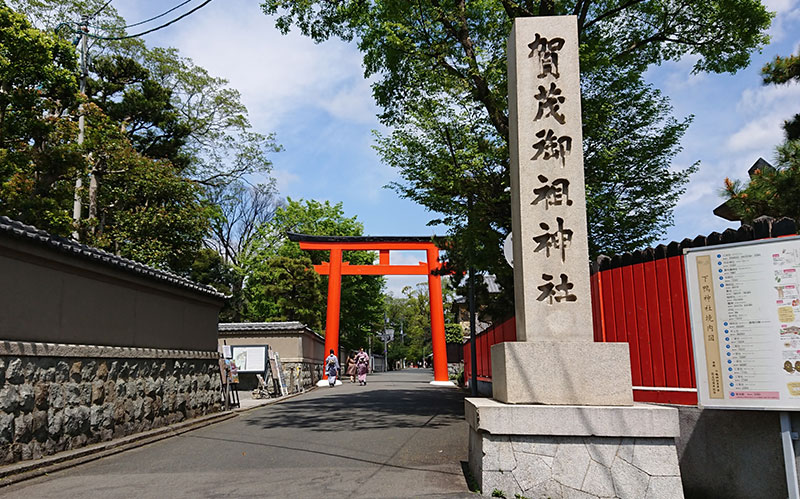
The official name of Simogamo-jinja Shrine is Kamomio-oya-jinja. It is considered one of the oldest shrines in Kyoto, dating back to the Kami period. The deities worshipped are Kamo Kensakushinomikoto and Tamayo Ehime-no-mikoto, and Tamayo Ehime-no-mikoto is said to be especially beneficial for matchmaking and child-rearing.
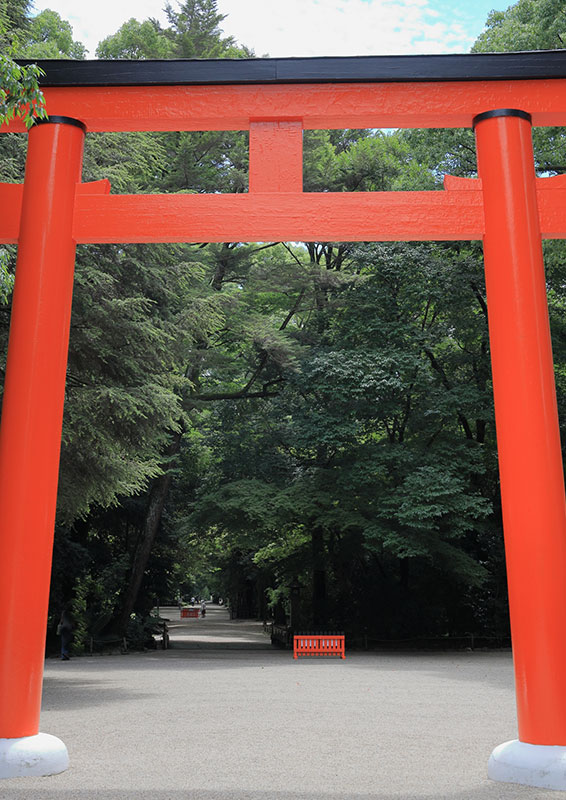
Let’s enter the precincts of the temple and look around. The Tadasunomori forest was damaged by a big typhoon that visited a few years ago. Although it still bears the scars of the damage, beautiful greenery spreads as far as the eye can see. This Tadasunomori forest preserves the appearance of an ancient forest. Visitors can enjoy a relaxing forest bathing experience even though they are in the middle of the city of Kyoto.
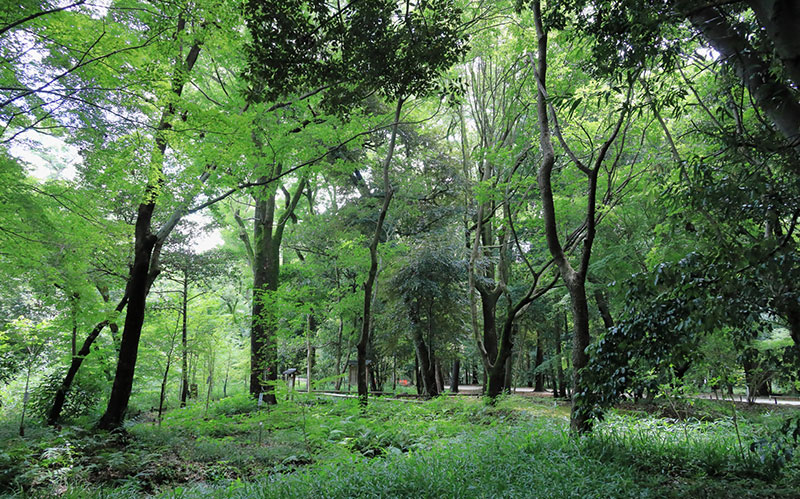
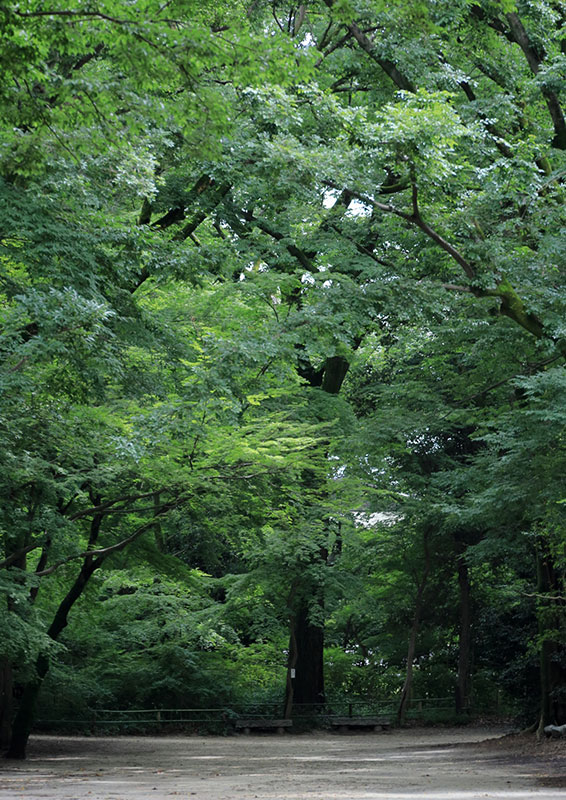
Continuing on the approach to the shrine, you will see the torii gate again. Passing through this torii gate, you will see a magnificent red tower gate. This is where the Shimogamo Shrine, a national treasure and World Heritage Site, begins. There is a shrine dedicated to the twelve Chinese zodiac signs as well as a hall of worship, so let’s pay our respects to each of them.
After visiting the shrine, walk west through the Tadasunomori forest to Shimogamo-Hondori Street. Walk for a while to the Demachi Masugata shopping street.


After visiting the shrine, walk west through the Tadasunomori forest to Shimogamo-Hondori. Walk for a while to the Demachi Masugata shopping street.
C. Demachi Masugata Shopping Street, where “now” and “old” coexist.
From Shimogamo-jinja Shrine, take Shimogamo-hondori Avenue and head south until you see a large bridge. Along the way, you will find fashionable cafes and pastry shops, which you can enjoy just by looking at them. Cross the big bridge and walk a little further south, and you will come to the traditional shopping street Demachi Masugata Shotengai.
Demachi Masugata Shotengai is a shopping district full of charm, where the “present” and the “old” coexist. While traditional supermarkets and stores line the street, there is also a mini-theater with a café and bookstore, as well as an antiquarian bookstore that will appeal to those who love subcultures, giving the area a student town Kyoto-like atmosphere.

The Demachi Masugata Shopping Arcade also has a specialty that local Kyotoites love. Located a short walk south along Kawaramachi Dori from the entrance to the shopping arcade is a wagashi (Japanese confectionery) shop marked by a long line of customers.
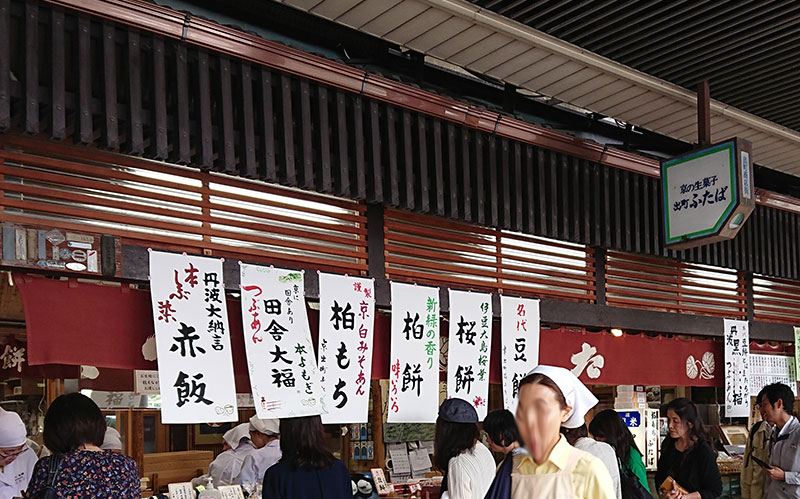
Locals line up to buy the refreshingly sweet bean cakes. If the line is broken and there are still some bean cakes left, do not hesitate to buy one. If you have a sweet tooth, you will be satisfied with the taste.
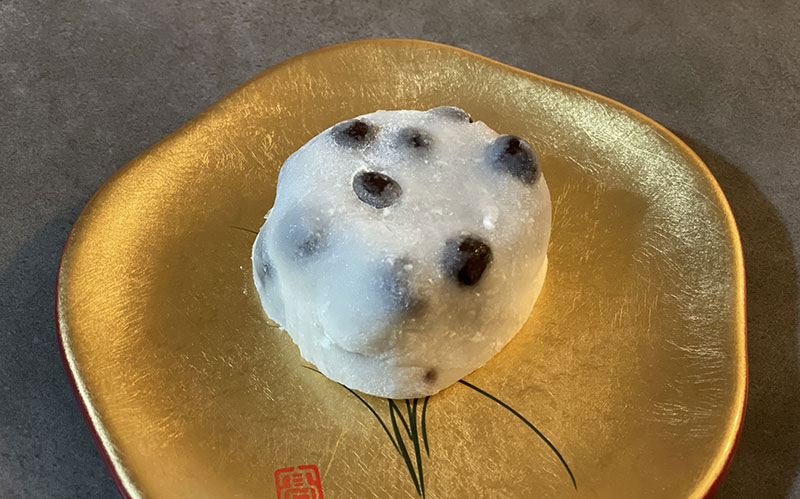
You can continue going south on Kawaramachi Dori, but this time, let’s go south down Teramachi Dori, passing the shopping street to the west.
After crossing Imadegawa Dori, the main street, you will see Kyoto Gyoen on your right.
D. Nashinoki Jinja Shrine, famous for its sacred water
Nashiki-jinja Shrine is located adjacent to the Kyoto Gyoen. It can be entered through the Seiwa-in Gate on Teramachi Dori in the Kyoto Gyoen. Nashiki Shrine is a relatively new shrine, founded in 1885. The shrine is dedicated to Sanjo Saneman, an Edo period lord. Although he may not be a familiar figure, he is said to have excelled in learning and literature.
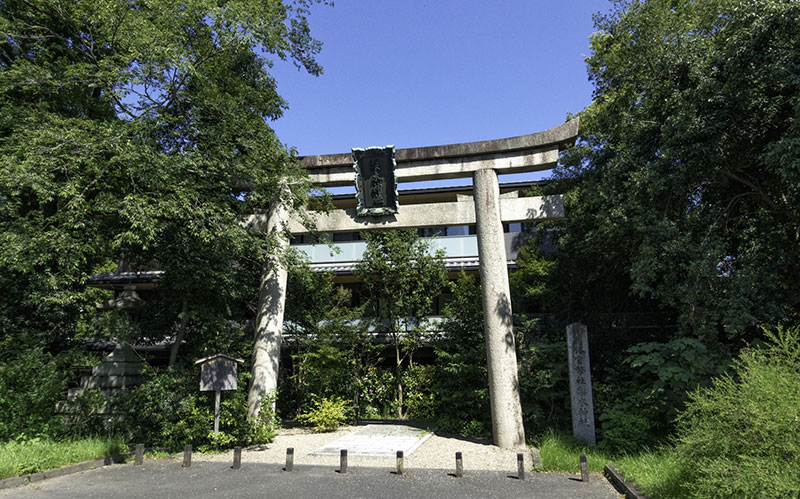
On the grounds of Nashiki Jinja Shrine, located at the end of a long approach, you will find a sacred tree called “Ai no Ki” (tree of love) with heart-shaped leaves, a stone monument to Akinari Ueda, the author of “Tales of Amagatsu,” and a monument to Dr. Hideki Yukawa. If you are interested, look for them. Nashiki Jinja Shrine is also famous for the well from which the sacred water springs. Its name is Somei no Ido (Well of Somei). The water was used for dyeing, but its sweet and tasty quality was also used for the tea ceremony. If you go to the awarding office, there are plastic bottles for drawing water, and you can also take some of the sacred water home with you.
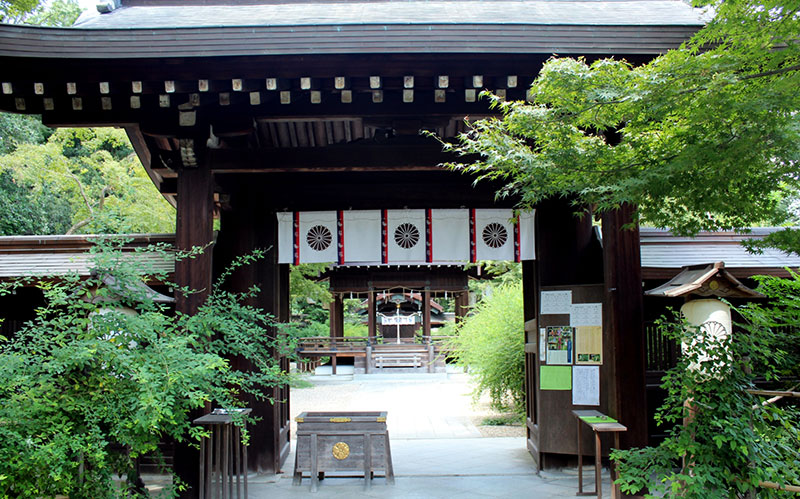
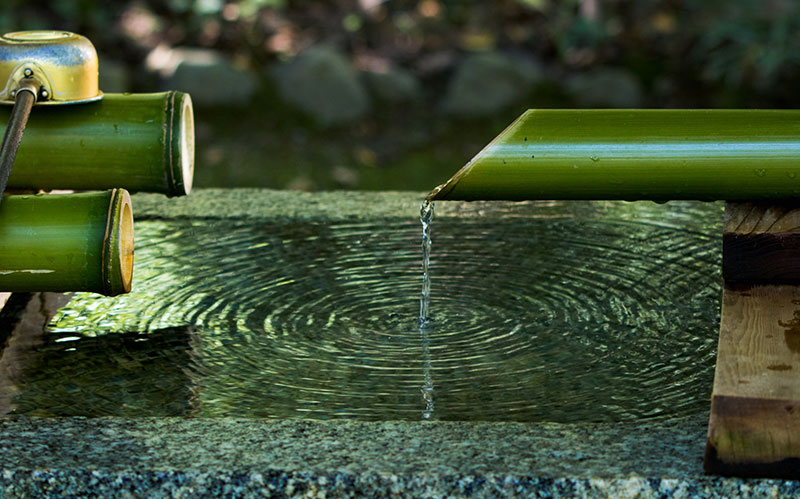
Next toNashiki Jinja Shrine, a small but worthwhile shrine, let’s take a walk in the Kyoto Gyoen.
The Kyoto Imperial Gardens (from the Seiwa-in Gate to the Inui Gate), where history is integrated into daily life
Once you leave Nashiki Jinja Shrine, you are already in the Kyoto Gyoen. A beautifully maintained gravel path opens up before you.
The Kyoto Gyoen is a vast park that includes the Kyoto Imperial Palace, where the emperor resided, and where the Tale of Genji was set. Despite being such a place, it is affectionately called simply “Gosho” or “Kyoto Gosho” by the citizens of Kyoto, and is used for daily walks and as a route to work and school. It is a national park along with the Outer Gardens of the Imperial Palace and Shinjuku Gyoen, and is a place of recreation and relaxation for the citizens of Kyoto, with a children’s playground and tennis courts on its vast grounds.
The Kyoto Gyoen is such a large park that it has several gates. In this article, we will enter from the Seiwa-in Gate, where the Nashiki Shrine is located, and walk to the Inui Gate located at the northwest corner of the grounds.
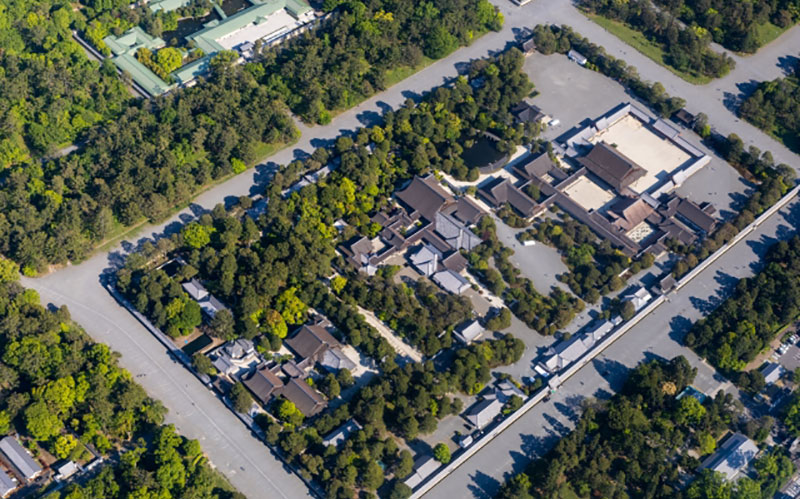
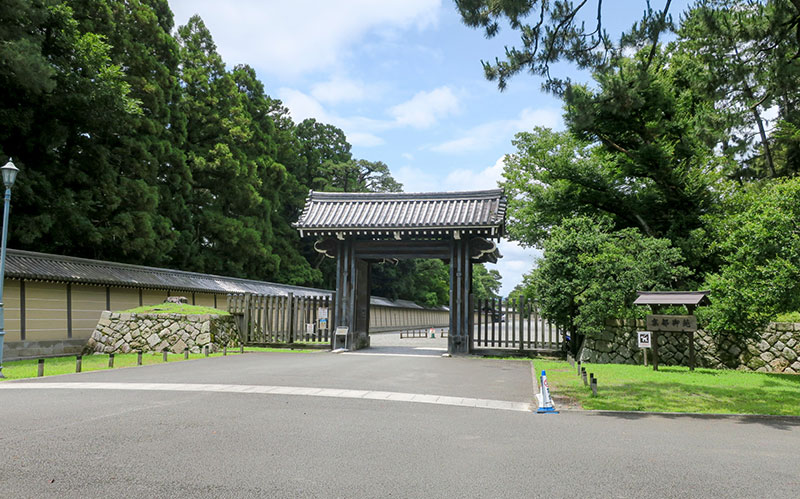
Entering from the Seiwa-in Gate, you will see an open field on your right and a magnificent wall on your left. Continue straight ahead, and you will see the Kenreimon Gate on your right. This is one of the gates surrounding the Kyoto Imperial Palace and is a magnificent structure. You can feel the atmosphere of ancient Kyoto. The Kyoto Imperial Palace is characterized by the fact that these old-fashioned buildings are right next to each other. They are within easy reach, but if you get too close, alarm alarms will go off. Be careful not to get too close.

Passing Kenreimon Gate and continuing on, you will see the Hamagurimon Gate, the scene of the “Forbidden Gate Incident,” a war that took place at the end of the Edo period (1603-1868). In this war between the Shogunate and Choshu forces, the area around the Hamagurimimon Gate was the scene of fierce battles. For this reason, it is also called the “Hamagurimon-no-hen. Incidentally, bullet holes from the war can still be seen today.
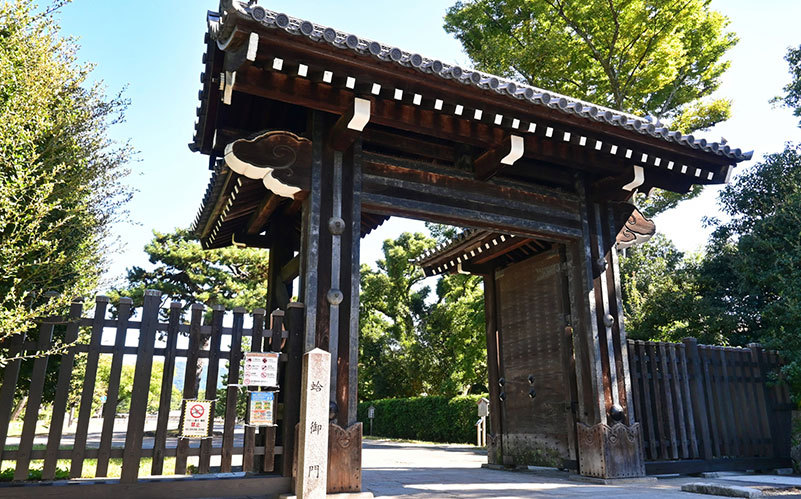
As you continue north in front of the Hamagurimimon gate, you will see a corner lined with a children’s park and cafes. The Inui Gate, which you are aiming for, is also close by. If you have time, take a break at one of the cafes. You can enjoy green tea and daifuku while taking in the beautiful scenery.
Passing through the Inui Gate, you will be right next to Karasuma Imadegawa, a major intersection. Walk north to reach the station.
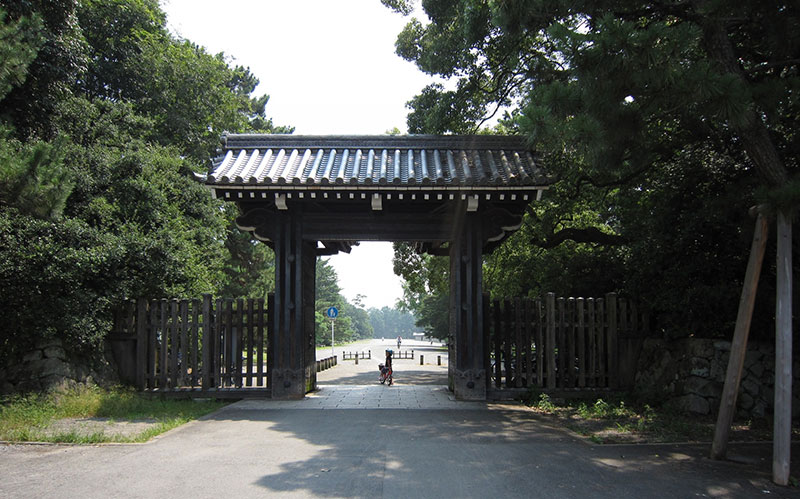
F.Imadegawa Subway Station
The goal, Imadegawa Station on the Kyoto Municipal Subway is located at the corner of a large intersection called Karasuma Imadegawa (because Karasuma Dori and Imadegawa Dori intersect). It is one of the most convenient stations because it offers direct access to Kyoto Station and other destinations.
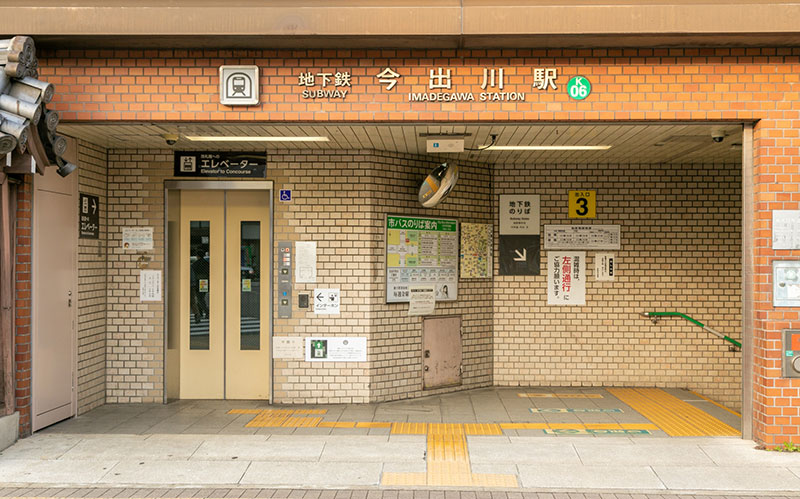

Around the station are Doshisha University and the Reizei family residence, an existing official residence. Unlike the Shijo and Kyoto Station area, but still a bustling place, Imadegawa is today’s goal, where you can enjoy the unique Kyoto atmosphere. Thank you for your hard work.
Review of the Kyoto Gyoen walking route from Shimogamo Jinja Shrine
A. (Start) Demachiyanagi Station
↓ 460m
B. Shimogamo Jinja Shrine
↓ 540m
C. Demachi Masugata Shopping Street
↓ 830m
D. Nashinoki Jinja Shrine
↓ Short walk
E. Kyoto Gyoen (from Seiwa-in Gate to Inui Gate)
↓ Move 1 km within the grounds, 170 m from Inui Gomon to the station
F. (Goal) Imadegawa Subway Station
Total approx. 3 km (except in Kyoto Gyoen, not including movement within shrines and shopping streets)
Link from Shimogamo-jinja Shrine to Kyoto Gyoen Strolling Site
Shimogamo Jinja Shrine Official website Click here
Demachi Masugata Shopping Street Official website Click here
Nashinoki Jinja Shrine Official website Click here
Kyoto Gyoen Official website Click here
